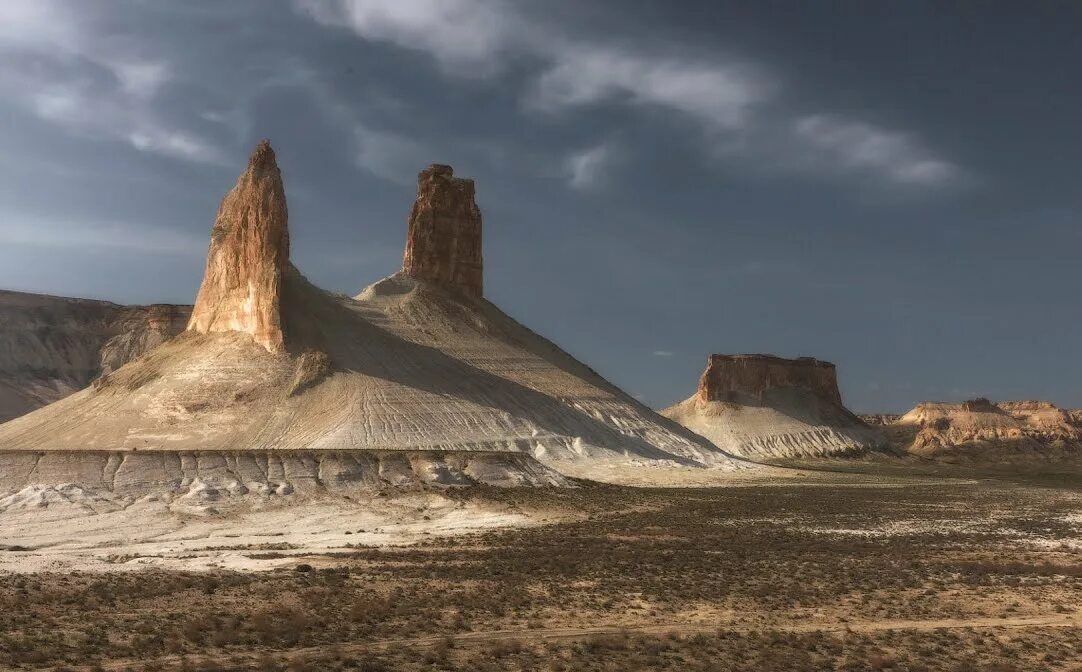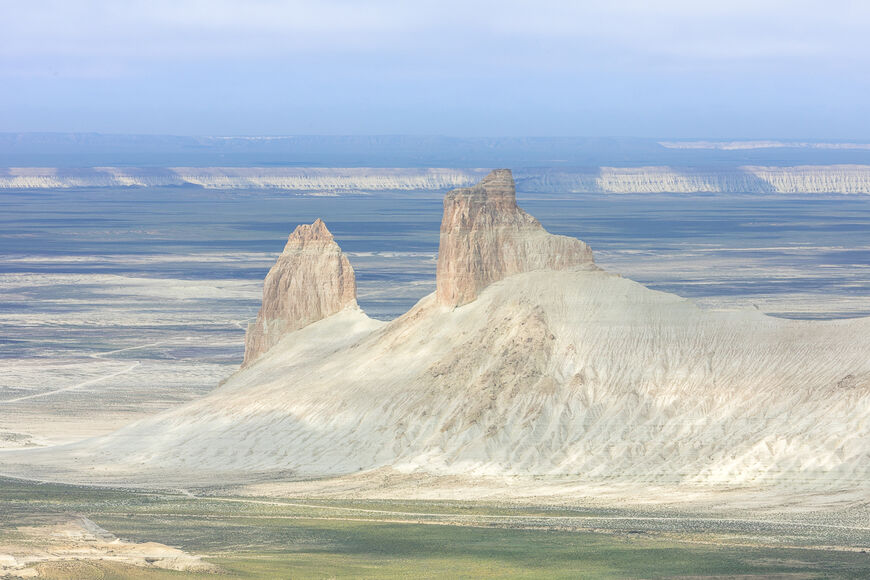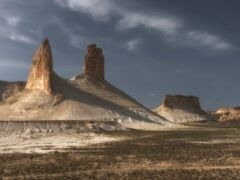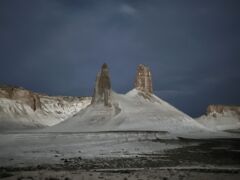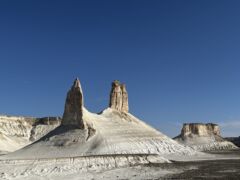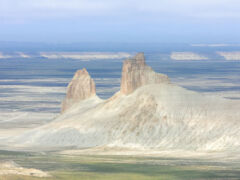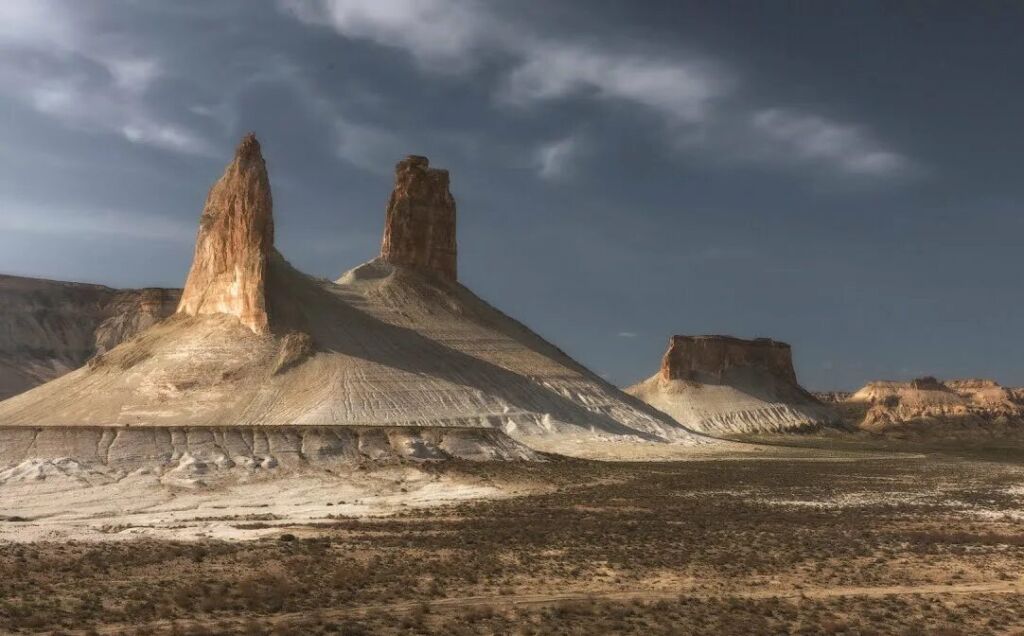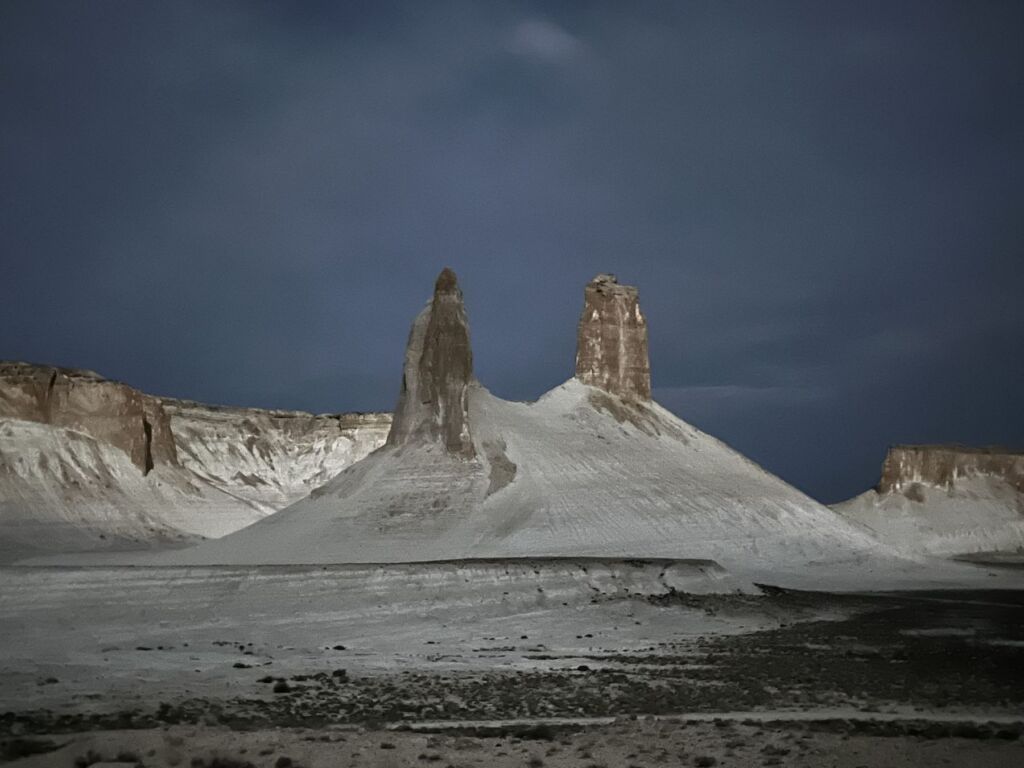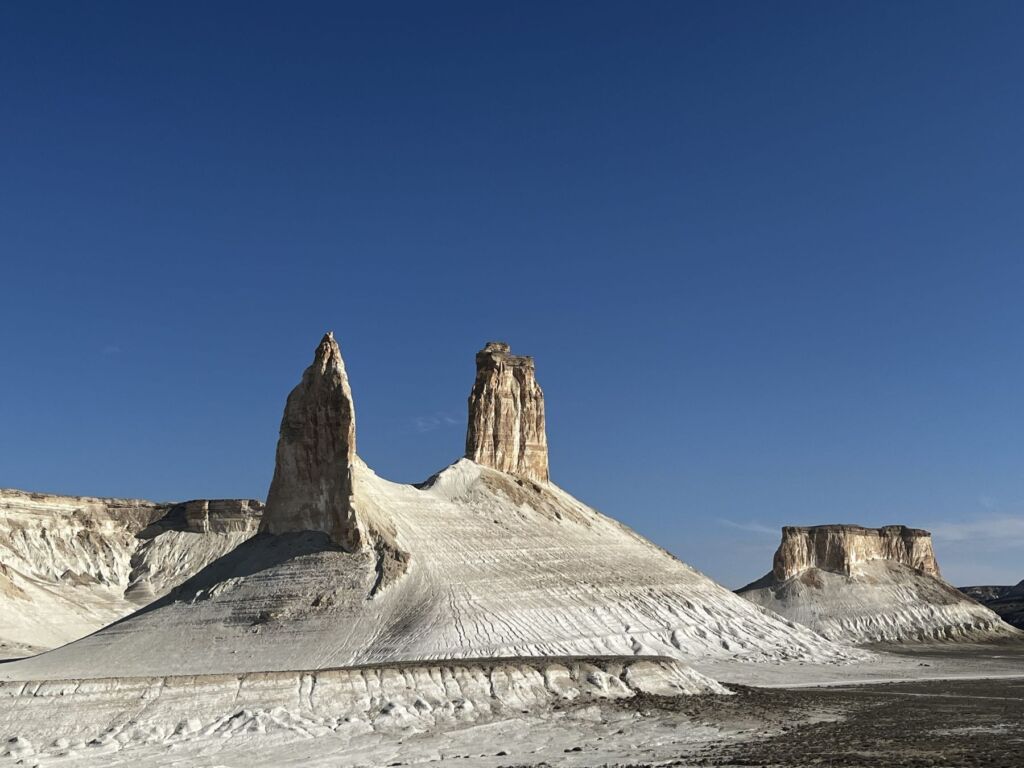бесплатно
Страна:
Регион:
Другие названия:
Значение:
Время визита:
Цена:
бесплатно
Описание:
A mountain, the height of which at a peak point reaches 287 meters. Penary “fangs” are preceded by the entrance to the tract — the remains who have become the hallmark of these places.
Translated from one of the Kazakh adversaries, the word “Boszhira” means “faded valley” or “gray earth”. There is a mountain ridge at the bottom of a huge canyon, this further enhances the visual effect.
In ancient times, everything was different here. The history of the appearance of the Boszhira is inextricably linked with the Ocean ATTIS and the creatures who lived in it. Millions of years ago, during the Mesozoic period, these lands were hidden under water. As you know, Tetish occupied most of the territory of Russia and Eurasia, sharing two continents — Gondwan and Lauria. Throughout its existence, the ocean changed, exposing the land in some places and flooding in others. It is believed that the final “closure” of Tetis occurred about 5 million years ago, but it gave rise to the oceans and the seas that exist to this day. For example, its relics are the Mediterranean, Black and Caspian Sea.
What we see at the moment indicates a series of cataclysms and natural changes that occurred in distant times. The earth rose and fell through again, the water was retreating, then returned. Life arose and disappeared. Scientists argue that at a later time there were steppes in the territory of the future tract. Hypparions (ancestors of horses) and Mahairoda (saber ‑toothed tigers) lived in them. Then the cheetahs, leopards and other types of wild cats came here. In the even later period, an oasis appeared on the site of the Boszhira, but with the next change of climate of the river, only rocky land and numerous rocks remained.
All the cliffs of the tracts are formed by sandstone and chalk layers. The forces of nature worked on their form for millennia — first water, and then the sun and wind. They cut the strata of stone deposits, forming bizarre relief forms. Once there were more Ostans, they were even higher and wider. Over the centuries, their height decreased slightly, but the area decreased several times. In Boszhir, the Ustyurt plateau turns into chinks — steep hard ‑to ‑reach ledges of high heights that limit the raised areas of the earth’s surface. All this is also the result of the influence of the water element.
Through the entire territory of the tract, petrified algae, shells, shells of mollusks and even the teeth of ancient sharks and other oceanic inhabitants are still often found. To detect such an imprint of the past, it is not necessary to arrange excavations, you can just look at the feet.
The two remains, with whom the journey usually begins, was nicknamed the “fangs” (Azu Tisteri). All because two peaks 200 meters high stick out of chalk scree, like the teeth of a giant monster. They also formed under the influence of external factors. Over the years, the mountains showered, only two pillars remained.
Nothing in nature stands still. The landscape continues to change. According to the researchers, after about 5,000 years, the cliffs will disappear, and the landscape of the Boszhira will change again beyond recognition.
Категории:
Метки:
Темы:
Зачем посещать:
Интерес:
Физподготовка:
Лучшее время:
Доступ:
Roads:
Info:
Tips:
Stay overnight. Meet the dawn and spend the sunset.
Connection:
No
- Мошенничество с Istanbulkart: чего следует остерегаться туристам
- 12 of the best places to visit in April in Europe: beaches, Easter, cities, and adventures
- And in Africa the mountains are this high
- Madagaskar
- Pakistan
- Reinhard Mey – Über den Wolken
- Derbent (Dagestan, Russia)
- Bosphorus
- Egypt
- The World’s Most Dangerous Countries for Tourism in 2025
- Lofoten Islands
- Nicaragua
- Everyone says i’m running away
- Morocco
- Chile
- Sri-Lanka
- Cod Wars
- Brest (Belarus)
- Georgia
- Travel to Cambodia

 United States
United States